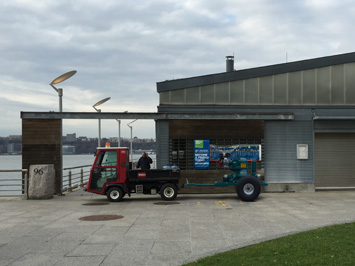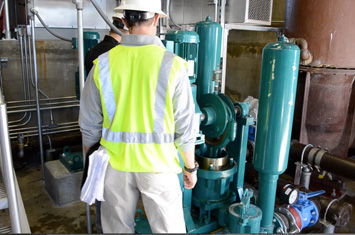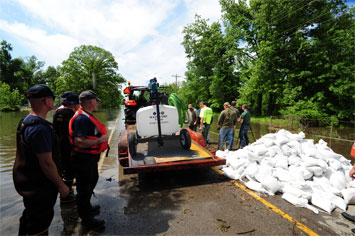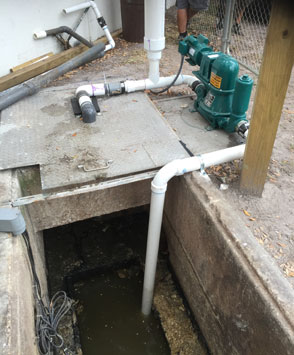
Waste pits, sump pits, catch basin, overflow pit, pumping from waste containers are all pump applications that medium and large size facilities have to contend with in the food, manufacturing, chemicals, and septic management industries. Having the right pump and piping arrangement can help you get the job done properly.
We want to walk you through just a few of the critical factors you need to consider when planning your waste pit application.
What is the Sump Pit Depth That You Need to Pump Out Of?
The depth of your pit or suction line will determine what type of pump you need. For pits from 5’-10’ deep a diaphragm pump may work well for this application. The photo you see above shows a standard sump pit used to pump chemical and general wastewater.
What are you pumping?
You also need to know what types of fluid will be in your catch basin, overflow pit or container. For example, if you are pumping chemicals that may be corrosive, you need to tell you technical support representative so they can review the pump materials of construction with you. Sewage, storm water, food waste and general wastewater typically work with the standard materials of construction.
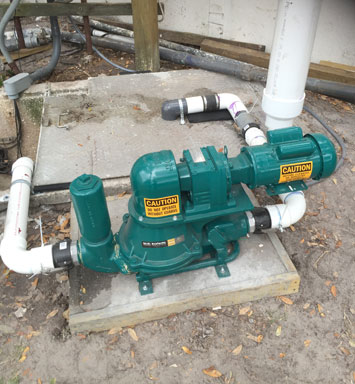
How far do you need to discharge or Pump the liquid, (discharge head)?
How far you need to pump the liquid is another key factor in determining the pump you need. Diaphragm pumps and trash pumps can typically push the fluid between 50’ and 500’ horizontal. When you are pushing the fluid a long distance vertically or if the fluid you are pumping is thick, then you will need to discuss your set up with a pump technical support representative or an engineer.
Your Pump Piping Arrangement
If you already have an existing piping set up for your waste pit pumping application you should always take a photo of it and show to your technical support representative, especially if you are replacing one pump with the other. If it is a new application or installation you should plan your piping to be as simple as possible. This means as few elbows as possible to minimize over pressurization of the pump. Generally the more the fluid needs to turn and twist, the less productivity you will get from your pump.

